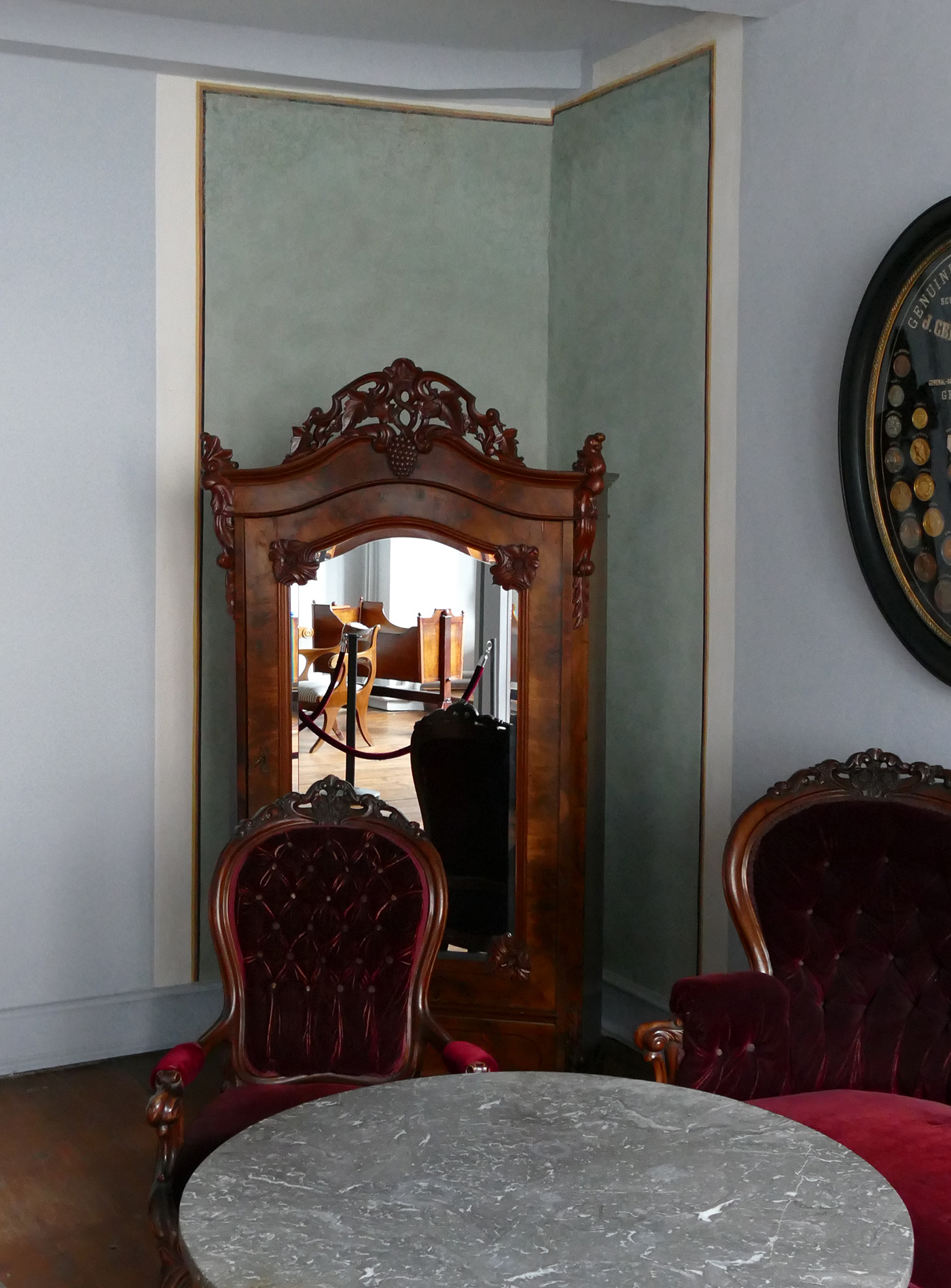
Zeitfenster im Museum Hameln
Windows into the past

Scroll down to read the English text
Polychrome Ofennische
Im 19. Jahrhundert bringt man hier eine vielfarbige (= polychrome) Ofennische an. Die mittige Fläche in Türkis ist schwarz-rot-gelb gerahmt. Wahrscheinlich lässt der damalige Besitzer des Leisthauses Wilhelm Wallbaum sie hier anbringen. Die Rahmung entsteht vermutlich aufgrund Wallbaums politischer Orientierung. Im Vormärz und während der Revolution von 1848/49 sind Schwarz-Rot-Gold die Farben von Liberalen und Republikanern. Wallbaum sympathisiert mit der Revolution von 1848/49 und engagiert sich als Offizier der Bürgerwehr sowie Mitglied des Volksvereins.
Noch am Ende desselben Jahrhunderts wird die Nische bereits wieder überdeckt. Dies geschieht vielleicht auf Veranlassung Wallbaums Kinder Adolph und Friederike. Beide fühlen sich im Gegensatz zu ihrem Vater noch während der Zeit des Deutschen Kaiserreichs dem hannoverschen Königshaus der Welfen verbunden.
Multi-colored oven alcove
In the 19th century a multi-colored (= polychrome) oven alcove was installed here. The central area in turquoise is framed in black, red and gold (yellow). Probably the owner of the Leisthaus at the time, Wilhelm Wallbaum, had it installed here. The framing is probably due to Wallbaum’s political orientation. In the Vormärz (Pre-March) period and during the revolution of 1848/49, black, red and gold were the colors of liberals and republicans. Wallbaum sympathizes with the revolution of 1848/49 and is involved as a vigilante officer and member of the people’s association.
At the end of the same century, the niche was already being covered again. This may happen at the instigation of Wallbaum’s children Adolph and Friederike. In contrast to their father, both feel connected to the Hanoverian royal house of the Welfs during the time of the German Empire.
